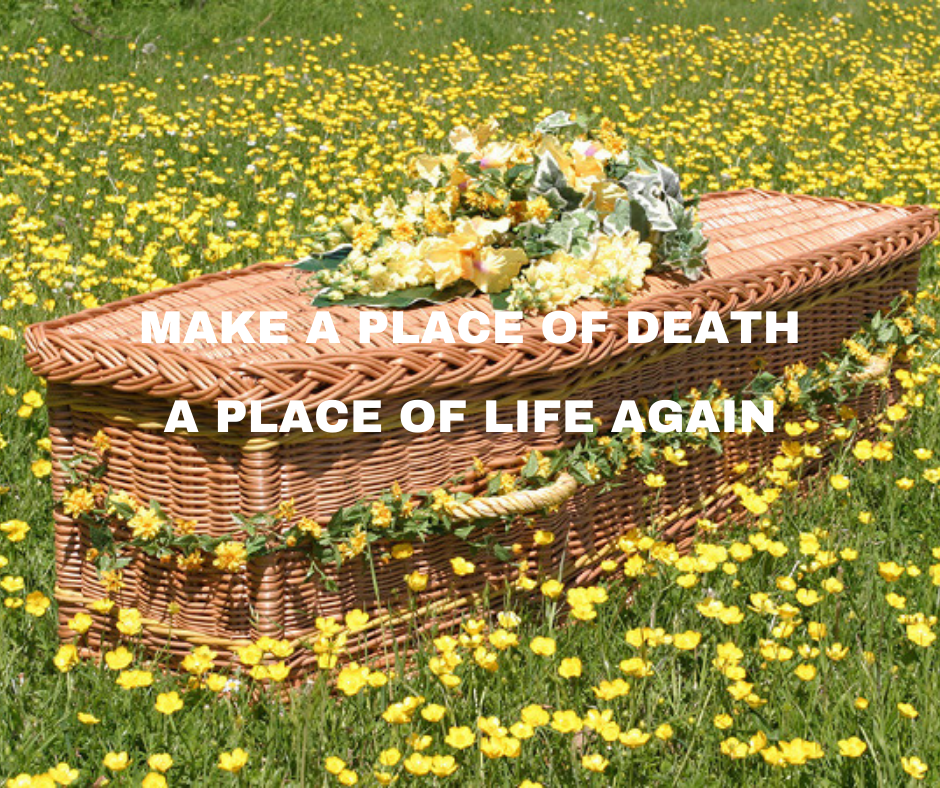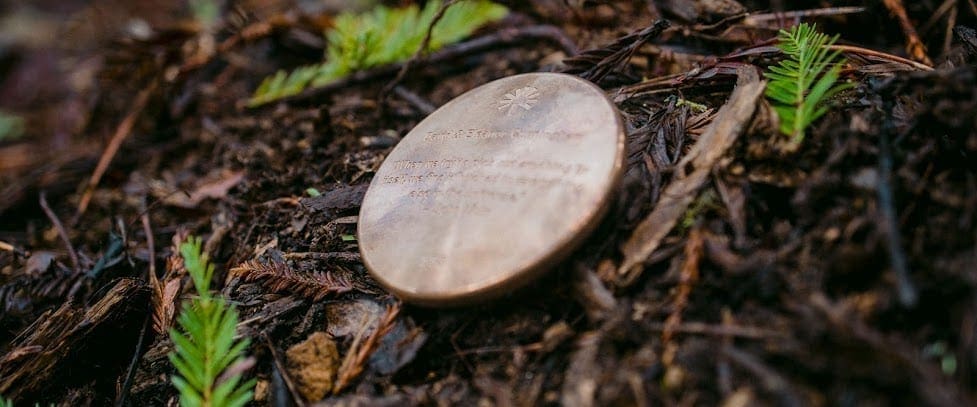What Is a Green Burial?
Cemeteries, burial grounds, and preserves can be considered green if they meet certain criteria:
- Caring for the dead with a minimal environmental impact
- Contributing to the conservation of natural resources
- Reduction of carbon emissions
- Protection of worker health
- Restoration and/or preservation of the habitat
- Use of non-toxic and biodegradable materials, such as caskets, shrouds, and urns.
Cemeteries choosing to follow these basic guidelines fall under the general category of green cemeteries.
As opposed to conventional lawn cemeteries that require concrete, plastic, or other vaults or liners and allow embalmed bodies and non-native wood or metal caskets.

There Are Three Types of Green Burial Cemeteries
Hybrid Cemeteries
A conventional cemetery that offers the essential aspects of natural burial, either throughout the whole cemetery or in a specifically designated section.
GBC-certified hybrids do not require vaults and must allow for all types of eco-friendly and biodegradable burial containers, such as shrouds or softwood caskets.
Natural Burial Grounds
A cemetery completely dedicated to sustainable practices and protocols.
Including but not limited to, conserving energy, minimizing waste, and not allowing the use of toxic chemicals, burial markers made of non-native stone, and burial containers not made from natural or plant-derived materials.
Conservation Burial Grounds
This is a type of extra natural cemetery that is established in partnership with a conservation organization.
These burial grounds include a conservation management plan that makes sure best natural practices are maintained. Also providing continuous protection of the land according to a conservation easement or deed restriction.
For a more detailed distinction between the 3 types of green burial locations, refer to the Green Burial Council standards.
How Much Does a Green Burial Cost? Is It Cheaper Than a Traditional Burial?
Traditional Burial Costs
Most people may not be aware (I know I sure wasn’t) that a traditional funeral could run about $11,000 – and that’s just the average cost.
Burial within a concrete vault, which is often required, and a headstone takes up a wapping $5,000 of that total.
The other $6,000 usually goes toward the funeral home fee, transport of remains, embalming/viewing preparation, casket, and other services that may be offered during a viewing/wake.
Also, note that these totals will most likely not include the burial plot itself. Or add-ons like flowers, food, or anything else you would like to present to the guests at the service.
Green Burial Costs
Surprisingly, it’s not like comparing organic vegetables to regular ones. While in a lot of cases, going greener is more expensive, in this case, choosing a green burial over traditional burial is actually much more cost-effective.
If you think about it, a natural burial does not allow for the traditional embalming process, which is expensive, and toxic to the workers administering it. As well as the earth in which you are buried.
You have no need for a concrete vault (as you want the body to decompose naturally back into the soil). Nor a fancy metal or hardwood casket, or a large headstone.
You are also avoiding the costs of labor and material for the upkeep of the plot. Such as the spread of herbicides, pesticides, and fertilizers, mowing, or cleaning and repairing headstones.
The average green burial will cost you about $1,000 – $4,000. These costs will include a burial plot, a natural stone marker, grave opening and closing costs. As well as mortician/funeral home services that offer natural solutions instead of toxic materials.
Biodegradable materials like pine boxes, cardboard containers, or burial shrouds are used instead of the traditional casket and are much cheaper and environmentally friendly.
check out this article by JoinCake.com for a more detailed price breakdown.
Green Burial Locations In Connecticut
The green burial council has a list of green burial certified locations.
There is only one green burial-certified cemetery in Connecticut – It is the Wooster Cemetery in Danbury, CT all the way on the west side.
It is a hybrid cemetery and offers traditional casket burials, green burials and even has a veterans section and a garden for scattering cremated remains.

Make Your Wishes Known In Your Estate Planning Documents
Figuring out where and how you want to be buried is one thing. Making sure that your loved ones know and are able to follow your wishes is entirely different.
When putting together your estate plan, you will most likely get these three basic documents – Last Will and Testament, Power of Attorney, and an Advance Healthcare Directive. In some cases, depending on your needs, you might also have a trust or a quitclaim deed.
Disposition of Remains
We will also offer to include a form called a “Disposition of Remains” – This is where you put down your wishes regarding your funeral, burial, and who you want to designate to carry out your final wishes.
In order for the funeral director to accept this document, it must be signed by two witnesses and notarized. As do most of the other documents in your estate plan.
If you have no detailed burial in mind and just want someone else to make those decisions for you, you can give your healthcare representative (named in your advance Healthcare Directive) explicit power to carry out your final arrangements by including this specific power in your Advance Healthcare Directive.
Note: By law, a licensed funeral director must oversee the final disposition of a body in Connecticut and can only follow through with directions from a validly-appointed individual or ALL persons who make up your closest next of kin, if you have not appointed someone.
Without a final arrangement designation, the responsibility falls on your next of kin and ALL persons of equal relation must agree to the disposition, starting by order of familial hierarchy. If there are no such family members, then the Probate Court will appoint someone.
- Surviving spouse
- All Adult children
- All surviving Parents
- All Siblings
- All persons in the next degree of kinship
For example, if you are not married and have five grown children, all of your children must sign off on the burial plan. This can be burdensome if they live far away. Or worse if you are not in touch with one or more of them.
Disclaimer: The information provided in this article does not, and is not intended to, constitute legal advice and is for general informational purposes only.
Let Us Know How We Can Help!
Please fill in your contact information and a brief message about what you need help with. A consultation will need to be scheduled in order to provide legal guidance.
Marketing & Technology Director at RWC, LLC, Attorneys & Counselors at Law
Ukraine born and Israel / Miami, FL raised. University of Miami graduate in the Marketing field.
Mom to a girl, a boy, and a Siberian Husky.








